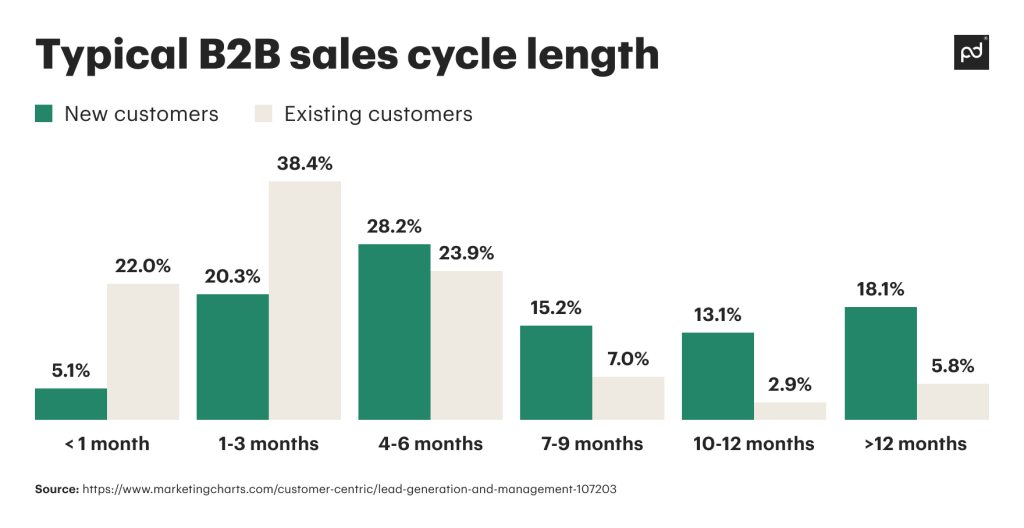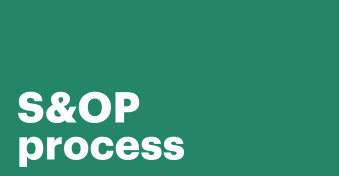Closing more sales makes for a more successful business, but how can you figure out what kinds of sales suit your company best?
We’ll explore inside vs. outside sales to show you what both entail and which kinds of companies need either one.
Understand inside and outside sales
While there are some key elements every sales proposal must have, there are also going to be some key differences depending on your business needs.
Whether you favor inside or outside sales can have a large effect on your sales proposals and goals, making it important to understand and consider both.
To help with this, we’ll be providing quick run-downs of their definitions and what each one actually involves.
From here, we can get a little more detailed, exploring the advantages that come with both types and in which situations they’re applied.
In doing so, you should be left with a strong idea of what is the most suitable for your product and your company.
What is inside sales?
Let’s kick things off with a definition of inside sales.
The inside sales model is built around the idea of sales reps working from their desks, without leaving the office.
This means the inside sales process relies on digital communication, as well as phone calls.
Some of the most common approaches used in inside sales include:
- Sales calls, both to existing customers and to prospective ones
- Video conferencing with leads to tell them about products they might be interested in
- Using text-based digital channels, like SMS or messaging services
- Talking with prospects over social media platforms, such as TikTok or LinkedIn
In other words, if it falls under the “virtual sales” banner, it counts as inside sales.
This approach to sales can be used by anyone in any industry.
With that said, it tends to be popular among SaaS companies, as their reps don’t have a physical product to push. It’s also widely used for B2B sales.
What is outside sales?
The definition of outside sales is deceptively simple: It essentially covers all face-to-face sales, or all sales that take place outside.
These are also sometimes called “field sales”, because they require outside sales professionals to go out into the field to sell products.
Unlike its inside counterpart, the outside sales model assumes that reps aren’t going to be spending much—if any—time in the office.
This lets them make their own schedules, though they’ll still be reporting to their managers at specific points.
Outside sales typically involves:
- Selling a physical product to people then and there
- Going door-to-door within a particular neighborhood or area
- Interacting directly with decision-makers, in the form of customers
- Traveling to various places to make sales
- Rarely spending time in the office itself
With regards to the last point, some outside salespeople may also make their sales via video conferencing platforms like Zoom. Although, this isn’t always the case.
Advantages of inside sales
It’s important to know as much as you can about what makes inside and outside sales attractive.
Both have their advantages and, depending on your business, it can be tempting to see how they’re equally applicable.
The following benefits are some of the most prominent or widely useful ones associated with choosing inside sales.
There are others as well, of course—it all depends on the nature of your business and how you conduct your inside sales.
1. Quicker response time
Inside sales reps can get in touch with people over a wide variety of platforms, many of which rely on short, rapid response times.
This also means your customers can reach out at any point and expect a quick response from your team. For example, they might contact your sales team on any of the following platforms:
- Phone
- SMS
- Social media
- Messaging services
- Company website chat portal
To give you an idea of the short response times we’re talking about, a 2021 study by InsideSales found that conversion rates are eight times greater if a rep responds to a phone call within five minutes!

You can explain details about the product to them via their chosen channels.
Additionally, your reps can take advantage of that quick response time to close deals efficiently in little time.
This also means that your inside reps’ customer relationships are founded on swift communication.
Your customers will know you’re able to cater to their needs promptly, and you’ll be able to amass more customers in less time.
2. Lesser cost of sales
When your sales reps are all working from the same office, you get to save costs in a lot of ways. That includes:
- The cost of traveling to and from each prospect’s house for every conversation
- Expenses associated with company vehicle maintenance
- Money you’d otherwise spend on portable equipment for salespeople
On top of this, speaking with more potential customers each day also contributes to reducing the cost of your sales.
That’s because your reps can close more than one sale at a time since they’re able to talk to multiple people over text-based channels at any given point.
That lets them complete sales in greater numbers, all within a single day, which in turn increases your return on investment (ROI) when comparing sales vs. sales reps’ time and salaries.
3. More time for selling
As we’ve mentioned already, inside salespeople engage in remote sales tactics.
That means that less time is spent getting from one customer to the next or on unnecessary travel—all the customers they need can be reached with the click of a button.
The end result of this is that they can spend a much greater portion of their day making sales.
The fact that inside sales relies on remote selling also means that your teams are more flexible and adaptable when it comes to unpredictable events, such as the 2020 pandemic.
They can work from home, the office, or a hybrid of the two.
Ultimately, leaving more time for selling as they’re less likely to struggle with major adjustments to their workstyle, should something occur.
However, bear in mind that given the more isolated elements of remote working, it is also important to support this style of working with various sales collaboration tools.
This will allow your team to work together efficiently and encourage further sales.
4. Easier scaling
The inside sales approach works best when you’ve got a dedicated sales team all working together toward the same goal of closing deals and making customers happy.
That means it’s most effective with more reps on the team, so scaling up is generally going to work well.
The use of technology by inside sales reps, means that your team will already be communicating with many customers at once.
Therefore, adding more people to the team will only amplify this further.
Going further than this, the heavier reliance on various tech tools will also make it easier to expand your team.
As the remote elements allow you to seek talent all over the world, and their accessibility means that whole teams can communicate and connect seamlessly.
5. Improved teamwork
Due to the more connected nature of inside sales, sales managers tend to work closely with their teams.
This means that the whole team is responsible for getting sales closed and an individualistic mindset simply won’t cut it.
With indoor sales professionals operating on this collective basis, they’re going to favor a teamwork-oriented approach.
If you’ve got multiple inside sales teams within your sales department, it can be a good idea to use the data those teams generate to drive improvement and boost teamwork.
In other words, you can use the sales data from high performing teams to create goals and teach lower-performing teams how to catch up.
It’s not just something that’s limited to your sales teams, either.
A key element in how to write a marketing plan is to make sure it aligns with your sales goals. Inside sales teams are, therefore, well placed to work with the marketing department to make that happen.
Advantages of outside sales
Of course, not every company works best with inside sales teams. In-person sales can be more suited to your needs and your product, as well as being an equally beneficial way to grow your business.
We’ve compiled three of the top benefits that come with using outside sales to give you an idea of what you can gain from choosing this approach.
Let’s jump right in and take a look, so you can see firsthand how inside vs. outside sales stack up in terms of their advantages.
1. Improved client relationships
While inside sales teams would typically use dedicated CRM software, outside salespeople still do plenty of customer relationship management without relying on technology.
Outside sales rely entirely on face-to-face interactions. Thus, allowing for customers and sales reps to develop a friendly relationship that involves getting to know one another on a personal level.
Or, to look at it from another angle, outside sales reps humanize your brand to your customers.
They won’t see your company as “just another anonymous business trying to sell me things”, because they’ll instead be thinking “wow, the person I spoke to was very friendly and persuasive.
I can really trust them when they say this product is good”.
By building up that trust, your sales reps ensure they’ve got amazing client relationships. This means that:
- When your clients have a complaint, they’ll know who to speak with to resolve it
- Any individual customer is more likely to be loyal to your brand
- Your reps can sell more products to their regular customers, who trust them
- Customers are more likely to recommend your brand to their loved ones
So, in short, your client relationships get stronger, and you have the chance to reap the benefits that come about as a result thereof.
2. Increased close ratio
We’ve covered the fact that outside salespeople build solid, friendly relationships with customers in order to make their sales.
Now it’s time to look at another benefit of those relationships: Higher close ratios.
During in-person meetings, customers are always going to have the chance to say “yes” right away and make a purchase then and there.
Since the salespeople often come prepared with the product(s) the customer will be receiving, this eliminates both wait times and shipping costs for the customer, which makes your products more attractive.
At the same time, trust once again plays a key role.
Once a customer has purchased (and enjoyed) one of your products, they’re likely to trust the same rep’s advice on a second, third, and fourth product.
This, of course, means more closed sales for that rep. In fact, according to LeadSquared, companies relying on outside sales achieve a 30.2% better close rate than those which rely on the inside alternative.
3. Better team performance
Your outside sales force doesn’t generally operate as one cohesive unit in the same way its inside counterpart does.
Instead, reps perform day-to-day sales activities on their own and only reconvene at predetermined times (such as the end of a day, week, or month).
So, how does that boost team performance?
The answer lies in the rewards offered for sales goals.
When you offer commissions for the sales your outside reps make, you encourage them to make more sales and enhance their own performance as much as possible.
After all, more sales means more commissions, which means a bigger or better take-home bonus at the end of the day.
You can always adjust your rewards to suit your individual goals.
The key is to ensure the rewards system is fair, while still pushing employees to work as optimally as possible.
Inside sales vs. outside sales: What is the difference?
We’ve seen the benefits that come with either type of sales.
Now, we’ll look more closely at the specific differences between inside sales and outside sales, as well as the actual processes involved.
While the five factors we’ve listed below cover the most important differences, it’s always good to know as much as you can about the way your sales teams operate.
To that end, you should consider combining this guide with other resources, such as the top sales blogs all sales managers need to follow for practical tips and insights.
Sales cycle length
Depending on the sales model you choose, you’ll end up with sales cycles of very different lengths.
Generally speaking, inside sales have a shorter sales cycle.
That’s because a lot of inside sales reps work with lower-value or smaller-scale products, so they can close a deal in little time and with less input from decision-makers.
On the other hand, outside sales tend towards much longer sales cycles.
The sales reps have to get to know each customer on a personal level before they can start to make recommendations, and they want to ensure that the relationships they’re putting work into are going to last past the first transaction.
That takes time, and so outside sales cycles are usually longer.
Of course, there are also exceptions to this rule.
To give you an idea of how much sales cycle lengths can vary, a recent survey found that the most common range was four-six months for a B2B sales cycle for new customers.
28.2% of companies surveyed reported that average length of cycle, while some 18.1% reported cycles of over 12 months, and only 5.1% stated that they achieved cycles of less than a month.

Close rate
Inside vs. outside sales reps close sales at different rates; these two sales jobs rely on that fact.
As inside sales reps often work with lower-value or smaller products they need to turn qualified leads into paying customers quickly, or those leads aren’t worth investing time into for the profit they bring to the company.
They also need to close a lot more sales in less time, so their close rate has to be high.
Outside reps, meanwhile, have different expectations placed on them. They can take a hit in terms of close rates, because one successfully closed sale is worth so much to the team and company alike.
A successful outside rep might close fewer sales, but ensure that those sales are very, very large and profitable. A successful inside rep can’t do the same.
So, not only are the actual close rates typically quite different, but the expectations surrounding close rates aren’t the same at all between sales approaches.
Skills
Given how differently inside and outside sales reps operate, it makes sense that the two jobs call for different skill sets. We’re going to break both of those sets down into similarities and differences.
Both inside and outside reps need to:
- Have excellent communication skills
- Be friendly and approachable
- Be knowledgeable about your company and its products
- Know how to answer questions on the spot.
Both jobs, therefore, call for skilled salespeople who are sociable and knowledgeable, but there are some skills particular to each.
Inside salespeople have to:
- Be skilled at customer outreach across multiple virtual platforms
- Be proficient at cold calling
- Know the ins and outs of various social media apps, including their trends and norms
- Work effectively in a team
- Communicate with multiple people at a time without sacrificing quality
- Multitask effectively
- Connect, and work in tandem with sales leaders
- Be good at lead generation and conversion.
Outside salespeople must:
- Be comfortable with face-to-face meetings
- Know exactly how to set about building relationships with customers
- Win trust and loyalty from the people they speak to
- Be skilled at working alone
- Know how to manage their own time and set their own schedules
- Know when to fall back on established templates, and when to play things by ear.
As you can see, the two positions call for people with different skills, qualities, and dispositions. Being great at one doesn’t necessarily mean you’ll excel at the other, and vice versa.
Sales quota
Drawing up sales quotas, as well as plans for how to meet them is crucial for any business.
However, different sales organizations have different ideas about those quotas, and your team’s status as an inside or outside sales team impacts them.
Since inside sales teams’ products tend to have a lower value, they’ll move towards their quotas and goals in smaller increments.
At the same time, they’ll typically have more people on board to help with reaching those quotas.
Also, as inside sales teams rely less on relationship building, they can more easily predict the impact of scaling up on their abilities to meet quotas.
They know how much an average new team member contributes to meeting quotas, so they can say easily how adding a set number of those new members will influence their performance.
Outside sales teams don’t quite work that way.
Firstly, outside team members can rarely start contributing towards meeting sales quotas immediately after joining the team.
They’ve got to take time to build up relationships with prospective customers first, and that work only becomes profitable later down the line.
There’s also the fact that outside sales teams’ individual sales tend to be higher-value.
That means that a single sale going through has a bigger impact on the whole team’s progress toward their quotas.
Tools
Lastly, the types of sales technology that both sales approaches rely upon differ greatly.
Inside salespeople tend to benefit from using lots of modern, cutting-edge sales tools to help them in their daily workflows. Some examples of tools they can use include:
- Communications platforms
- Sales tracking software
- Cold calling software and automated dialers
- CRM tools.
Essentially, if a piece of tech helps inside sales reps get in touch with more people, more quickly, it’s worth their time.
This applies regardless of the method of communication that the tool in question is geared towards.
Outside sales reps, meanwhile, have little use for things like virtual communications platforms. Instead, they’ll usually use the following:
- Mobile-friendly CRM tools they can take into the field
- Software for mapping sales territory
- Prospecting tools to identify leads.
Finally, there are some tools that can be of benefit to both sales types.
For example, using the best contract management software can speed up sales cycles for both inside and outside teams by increasing access to documents and reducing the time needed to create them.
Inside reps vs. outside reps: What do they do?
Since your inside sales team is focused on connecting with customers and leads remotely, they tend to spend their workdays in the office.
A non-exhaustive list of the typical activities in the day-to-day work of inside sales representatives includes:
- Generating lists of prospects, either by hand or using dedicated software
- Cold connecting with leads; which includes cold calling and messaging, among other things
- Speaking with leads who are considering making a purchase, but aren’t sure yet
- Answering questions and allaying fears
- Explaining product details
- Resolving questions and queries
- Closing sales
- Speaking with existing customers about new products
- Talking customers through loyalty programs and other promotional material
- Connecting with team members to drive conversions together.
Next, let’s look at what your outside sales team gets up to.
Your outside sales representatives spend plenty of time away from the office.
In fact, many of them spend all of it outdoors and on the road, traveling to speak to customers. Their workflows and daily tasks might include:
- Traveling to where the customers are
- Knocking on doors and introducing new people to products
- Connecting with the same leads or customers they’re already familiar with
- Building trust and friendly relationships with customers and prospects
- Providing plenty of details about products, so customers can make informed choices
- Making personalized recommendations based on their knowledge of customers.
Inside sales vs. outside sales salary
You might still be wondering about inside sales vs. outside sales compensation for your reps. Not to worry; we’ll be covering that here.
As inside and field sales reps don’t have the same responsibilities or skills, it does follow logically that they don’t tend to earn the same pay.
Of course, salaries also have to account for the different levels that exist within either career. A manager should expect to earn more than their team members, for example.
You need to know about all these factors to ensure you’re taking the right approach to salary and contract management.
A general rule of thumb is that outside sales reps tend to earn more than inside reps. This is because field sales reps typically bring more revenue to the company they work for.
Since they finalize larger sales, they’re seen as more indispensable for a company’s growth, and this leads to them earning higher salaries.
Choose the suitable sales strategy for your business
As we’ve explained, there are some major differences when comparing inside vs. outside sales.
But that leaves us with one question: Which one should you choose for your business?
The most important thing to do is to ensure you’re always acting in your business’ specific best interests.
Whether that means using increased sales automation or none at all, and whether that means focusing on either inside or outside sales—what counts is doing what your company needs.
If the characteristics of one type of sales sound like they suit you perfectly, then that’s the one you should focus on.
If both sound equally good, that might be a sign you’ve got to explore both options.
Either way, be sure to evaluate your business’ needs and goals before making a final decision.
This will help you get off on the right foot, and ensure you make choices that benefit your company in both the long and short run.
Disclaimer
PandaDoc is not a law firm, or a substitute for an attorney or law firm. This page is not intended to and does not provide legal advice. Should you have legal questions on the validity of e-signatures or digital signatures and the enforceability thereof, please consult with an attorney or law firm. Use of PandaDocs services are governed by our Terms of Use and Privacy Policy.


